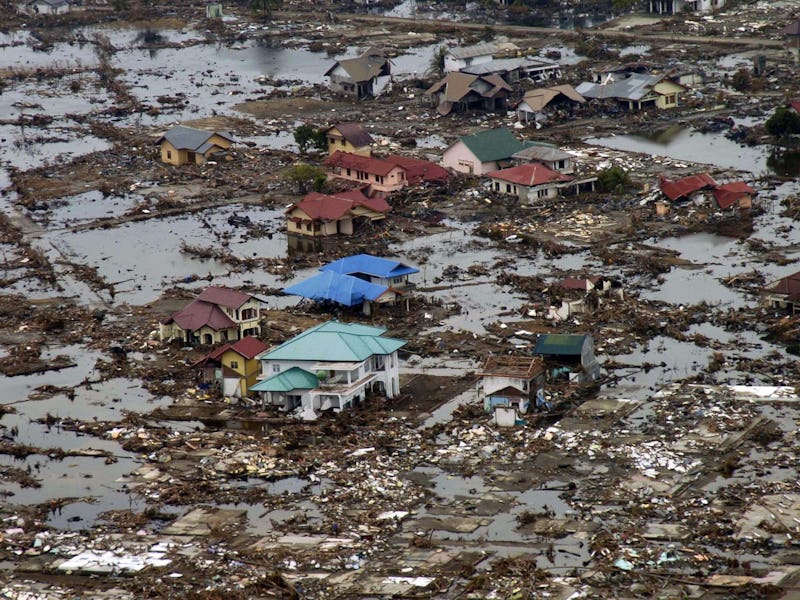Scientists Have an Algorithm to Predict Tsunamis
You can't outrun a tsunami, unless you have a head start.

Scientists at the Australian National University have a plan to improve tsunami warning systems around the globe: they’ve built an algorithm.
Using data from monitors in the ocean and modeling what a tsunami looked like when it was birthed, the team of researchers can better predict how big it is, where it’s going, and who’s at risk. This is a big step beyond existing tsunami warning systems, because it uses the actual data to generate predictions, rather than scenarios for tsunami risk that scientists have previously calculated, says Jan Dettmer, a seismologist at the university.
Dettmer and colleagues presented their new algorithm today at a meeting of the Acoustical Society of America in Salt Lake City.
Earthquakes can be devastating, but it’s often the tsunami that follows that causes most of the death and destruction. In 2004, a 9.1-magnitude earthquake struck off the coast of Sumatra, shifting the seafloor and sending devastating tsunami waves that struck Indonesia, Sri Lanka, India, Thailand, and areas beyond. An estimated 230,000 people were killed.
NOAA's Dart II detection system monitors the ocean surface and floor to sense when a tsunami is rising.
The power of a tsunami is undeniable. The giant waves can travel at speeds of 500 miles an hour, taking out anything in their path. A tsunami doesn’t look like the sort of wave a surfer might covet, because its wavelength is so long, sometimes stretching over hundreds of miles. When it strikes land it often appears not as a cresting wave but as a very quickly rising tide.
But despite the overwhelming destructive potential in these waves, there is hope. Tsunamis may be quick, but they travel much slower than the shockwaves from the earthquake that birthed them. As a result, it is possible for humans on land to get minutes or hours of warning to seek higher land. Better warning systems might have saved 50,000 lives in the Indian Ocean tsunami, according to the United Nations.
Dettmer says his team’s computer program improves on the accuracy of existing tsunami prediction systems, without sacrificing speed. But generating better, faster predictions is only part of the solution. In order to save lives, that information must very quickly get to the people on the coast. The good news is that the proliferation of cell phones, internet, and communication technologies in even the most remote parts of the world means that it is possible to deliver tsunami warnings like never before.
Tsunamis cannot be stopped. But their cost to human life can be dramatically reduced, with the help of technology, if governments, researchers, and communities can come together to make this a priority.